10 Different Types of Whisks and Their Specific Use in The Kitchen For Cooking
Not all kitchen whisks are the same: there are different varieties designed specifically to meet the many uses that can be made of them, such as emulsifying, mixing or whipping sweet and savory ingredients.

Choosing the right cooking utensils is essential to make the most of the recipes you prepare, but also to make them easier. Opting for the most suitable can make the difference. An accessory that is often underestimated is the whisk: we all have one (maybe more than one), because it can perform many functions, from mixing to whipping, through beating and emulsifying the most disparate ingredients, sweet and savory. Below we have collected some types of kitchen whisks, ranging from the most common to the lesser known, indicating their characteristics and how to use them best.
1. Classic Whip
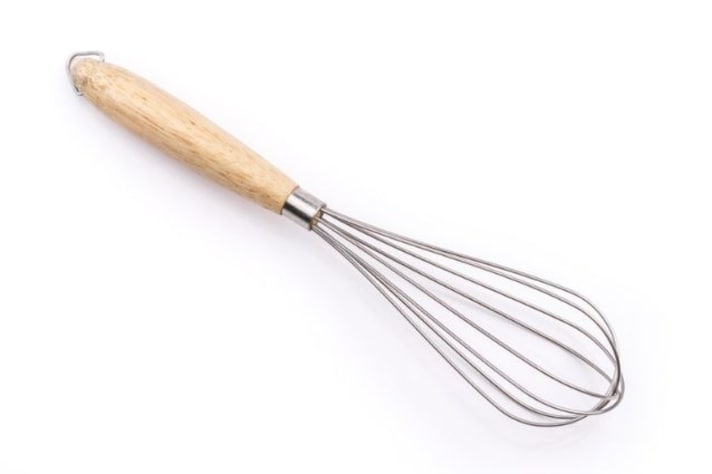
The name leaves no room for doubt: it is the most widespread type, the one with the wires that start from the handle and all converge at the same height. It is used to emulsify, whip or mix liquid ingredients (hot and cold) or powders: to have at home as a basic tool, as it is suitable for all preparations.
2. French Whip
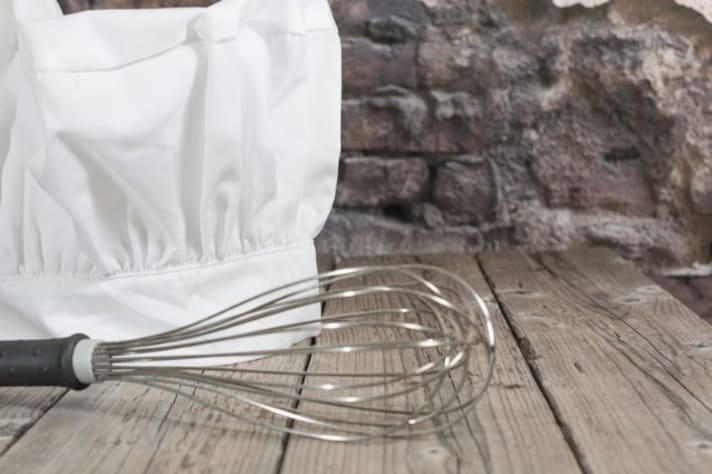
The French whisk is very similar to the previous one, but it can be recognized by a detail that makes the difference. The wires are not all at the same level, but there are some that stick out at the top, useful for collecting and incorporating into the mixture even the leftovers that may settle on the bottom of the container, so as to have more homogeneous doughs, like that of crêpes.
3. Whip With an Internal Sphere
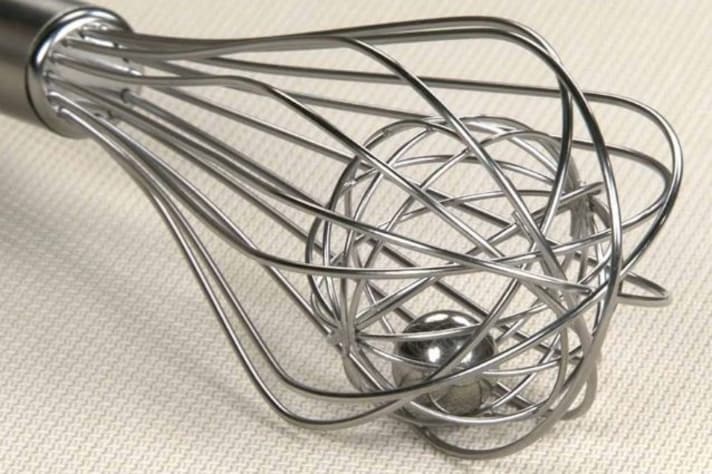
It is essentially identical to the ones just seen, with an additional detail that increases its performance when there are ingredients to be whipped: inside, in fact, there is a caged sphere with a ball, which through the double rotation amplifies the gesture, with the effect of incorporating more air and forming fewer lumps.
4. Balloon Whip
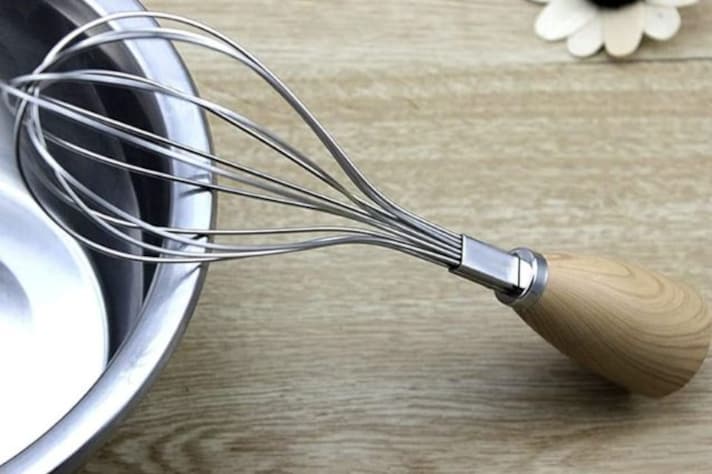
Compared to the first two, the balloon whisk has a more rounded shape, sometimes decidedly domed, and is specifically designed to incorporate a greater quantity of air during movement, thus giving softer and lighter voluminous consistencies. For this reason, it is recommended when whipping cream, egg whites and even egg yolks.
5. Flat Whisk
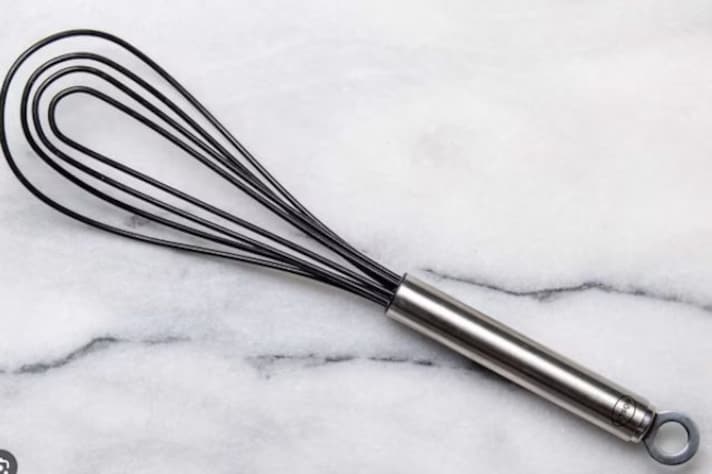
The appearance of this whisk is different from the others because the wires of different lengths are positioned on a single line, which takes the shape of an inverted U. The final goal, therefore, is not to whip, but it is functional for scraping the ingredients from the bottom and mixing them better, avoiding burning. For this reason it is also called roux whisk, suitable for béchamel or Mornay, sauces that have a base of butter and flour, and sauces in general.
6. Coil Whip
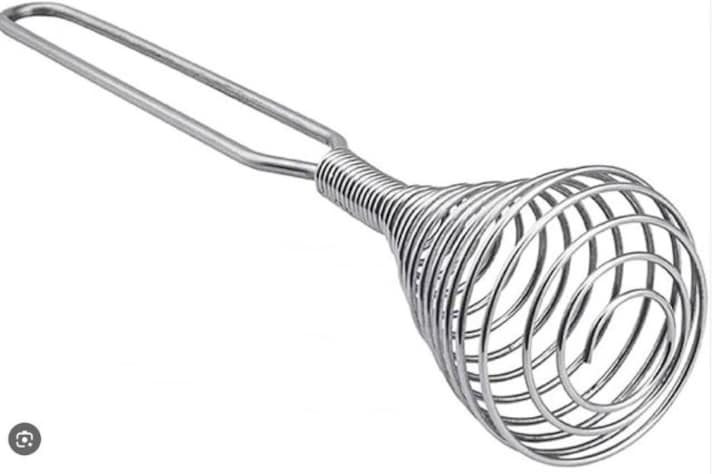
This whisk is made of a single wire that descends like a spring that swells in the middle, in the style of a pot-bellied pyramid. The rigid structure favors movements from top to bottom, and is useful for giving even more lightness to liquid doughs, such as those with eggs (for example to make omelettes or meringues) or cream.
7. Spiral Whisk
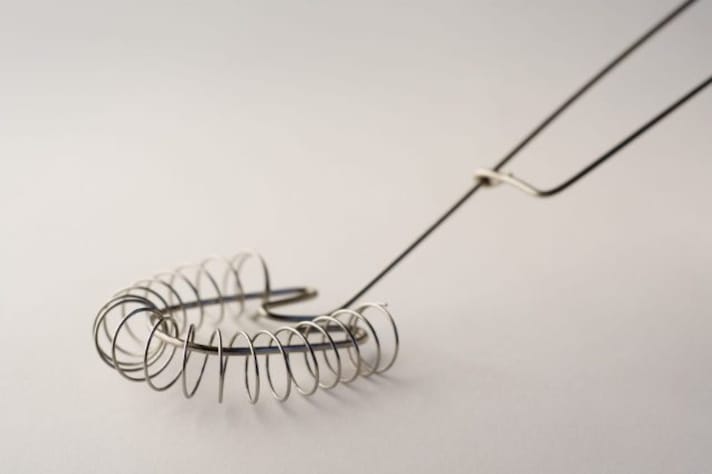
The spiral whisk is a real ace up your sleeve when it comes to sauces, gravies or creams that need to be made in small or shallow bowls. It is a coil characterized by a single spiral wire, perfect for preventing ingredients from sticking to the bottom so as to have smooth and lump-free compounds.
8. Whip With Spheres
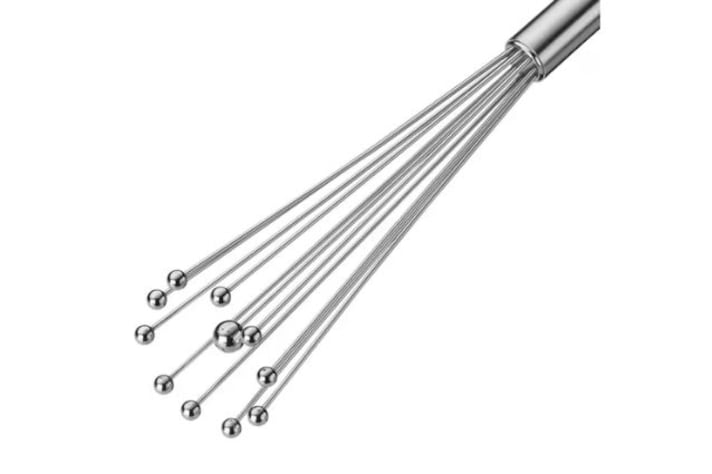
The shape might remind you of a torture device, but, on the contrary, its application is under the sign of delicacy. This whisk made of rigid wires with a small sphere positioned at the end of each, guarantees flexibility and care in emulsifying: use it to mix the ingredients of sauces such as vinaigrette or mayonnaise.
9. Danish Whip
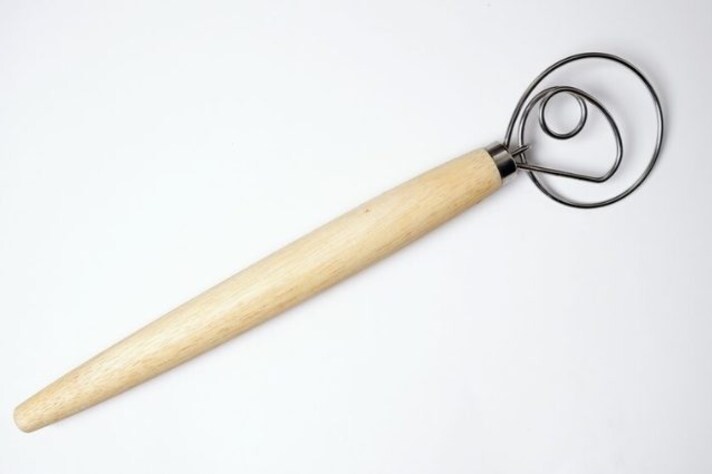
If you like to get your hands dirty, the Danish whisk is a great ally for not using your hands (and to replace forks, spoons and spatulas). It has an original look: it consists of a wooden handle with a circle at the top that has other circles inside. It makes it easier to mix the ingredients, especially the semi-liquid ones, when you try your hand at high-hydration pizza and bread.
10. Chasen Whip

Made entirely of bamboo bristles, the Japanese chasen whisk is used to prepare matcha tea, emulsifying the powder in the water with rapid M-shaped (or zigzag) movements that dissolve it and at the same time form a thin layer of foam on the surface.
;Resize,width=767;)


;Resize,width=712;)
